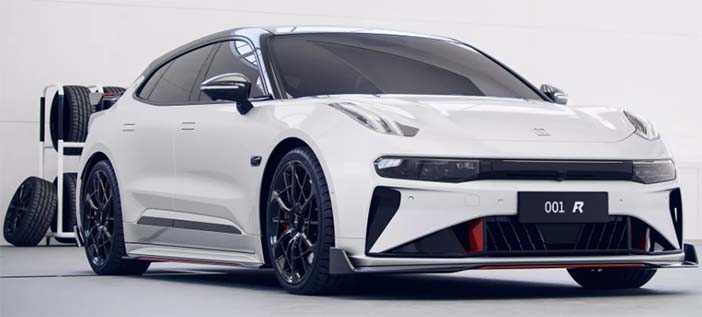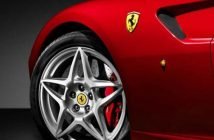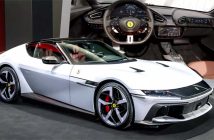+++ We’ve known for a while now that FERRARI plans to launch its first all-electric model in 2025, and recent reports suggest the model is well on its way. The brand’s CEO, Benedetto Vigna, has already taken a prototype of the car for a spin, and “liked it a lot”. The new CEO revealed that he had driven the car in an interview. Unfortunately, the EV remains mysterious, as Vigna declined to share more details about the model. Vigna did say that the brand has a very deliberate process for vehicle development that takes several quarters. However, we know that Ferrari has the capacity to build EVs today, having recently completed work on its “e-building”, which will produce fully electric vehicles alongside hybrids like the 296 GTB. Indeed, Ferrari has laid out a plan to slowly reduce the proportion of internal combustion vehicles it produces. It intends for electrified vehicles to make up 60 percent of its sales by 2026 and 80 percent by 2030. However, with the help of e-fuels, it expects to keep internal combustion engines in its showrooms for years to come. By 2030 it expects to still be selling ICE-only vehicles, as well as a selection of plug-in hybrid models. The automaker, along with other smaller supercar brands, has successfully lobbied to be allowed to adopt electric power more slowly than the rest of the industry, and for e-fuels to be acceptable under the European Union’s emissions regulations for the future. Unfortunately, details relating to the brand’s first electric vehicle remain scant. However, a patent filing suggests that it could be sold with a “sound reproduction device” that creates a noise that relates to a vehicle’s speed, something that electric vehicles lack, and which many enthusiasts associate positively with fast cars. +++
+++ FIAT wants to make life difficult for Chinese automakers aiming to conquer European markets, and the way to do it is with the all-new and fully electric Panda. The production version of the 2019 Centoventi concept is set to debut next year, targeting affordability and following the steps of its predecessors. In a recent interview with the La Repubblica, Fiat’s CEO, Olivier Francois, shared his thoughts on the upcoming model. Francois said that Fiat “can and must develop a solution that puts the Chinese in difficulty”, based on the Centoventi concept. The Fiat boss said that the new electric Panda will “re-purpose” the principles of the previous generations, adopting a “less-is-more” approach. He added that the EV will be focused on the “essentials” rather than being luxurious, in a similar manner to the Giugiaro-style first-generation Panda from the ’80s. The target is to be offered at “a lower cost” compared to rivals, despite being produced in Europe and possibly in Italy. Italian media suggest that the new Fiat Panda will be closely related to the upcoming Citroën ë-C3, sharing either the tried-and-tested eCMP platform or the more evolved STLA Small underpinnings. The French supermini is expected to debut later this month (initially in EV form) with Citroën promising a starting price below the €27.500 mark in the Netherlands. This figure matches the target price of the Renault 5 which is also coming in 2024, and the Volkswagen ID.2 set to follow in 2025. It remains to be seen if the Fiat Panda will manage to undercut the aforementioned models, as this would be the only way to pose a real threat to cheaper Chinese-built rivals. On a side note, the current ICE-powered third generation of the Fiat Panda is expected to solider on until 2026, despite the fact that it was originally introduced back in 2011. +++
+++ LEXUS appears to have something up its sleeve, and has been on a trademarking spree in Europe. The automaker appears to be working on a collection of concept cars that could hint at upcoming electrification plans. The names all follow Lexus’s established naming conventions, and all contain the letters L, F and Z. The nameplates are, LF-ZC, LF-ZL, LF-ZV and LF-ZA. Unfortunately, the trademark filings reveal little else about the vehicles. However, based on recent history, we know that Lexus has mostly been using the LF prefix for concept cars. Going back to 2018, it revealed the LF-1 Limitless, a flagship crossover concept, at the Detroit auto show. More recently, and perhaps even more relevantly, it came out with the LF-Z Electrified concept. That concept was explicitly designed to showcase the future of Lexus style, and became the RZ all-electric vehicle. The confluence of the LF and Z suggest to us that these names are intended for one or more concepts that hint at upcoming electric vehicles. Indeed, Lexus is currently teasing just such a concept car ahead of its official unveiling at the Japan Mobility Show 2023 on October 25. Featuring angular styling, familiar L-shaped headlights, and light up Lexus badging, the concept is expected to be based on Toyota’s next-generation EV platform. One of a wide variety of EV models the brand is planning, it wouldn’t be a surprise if the automaker was working on a flurry of upcoming concepts to preview them. Unfortunately, I am not sure what Lexus is planning specifically. However, its parent brand, Toyota, recently revealed that the vehicles it builds on its new EV platform will have up to 800 km of range and will be able to charge from 10-80 percent in 20 minutes by 2026. +++
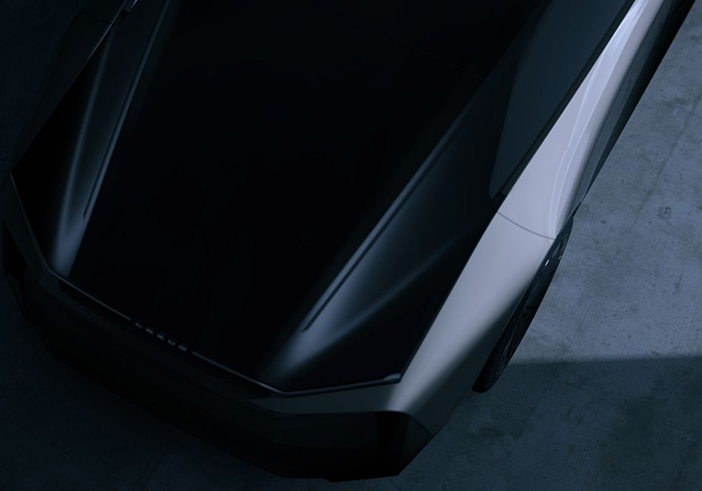
+++ A new report suggests that LUCID has made less than half of its total production goal for the year some 8 months into 2023. Should it miss its goal it’ll be only the latest setback for the electric vehicle automaker. It’s not the first time that Lucid has struggled to ramp up production either. Lucid doesn’t report its monthly sales or production figures so finding out how things are going mid-year can be a bit tricky. Data from Experian shows just 4.267 newly registered Lucid vehicles since January. Before August, when a further 478 registrations were added, the figure was below 4.000 units. That’s a far cry from the initial production estimate that Lucid provided for 2023 of up to 14.000 units. It cut that early this year in May to “over 10.000”. Unless it has a massive trick up its sleeve or a bunch of new owners that haven’t registered their vehicles, it doesn’t look like it’ll hit that 10.000-unit goal. That’s just bad news for a brand that’s seemingly always struggled to meet its own initial goals. At the beginning of 2022, it said it would build 20.000 cars during the year. Then that was cut to 12.000-14.000. Not long after, Lucid halved that figure to just 6.000-7.000 cars. Notably, it did hit that very watered-down goal, rolling 7.180 Air sedans off of the production line in 2022. In fact, things looked like they were on the upswing last year as production ramped up quite a bit between the middle of the year and Q4. If this report proves indicative of end-of-year figures, the ramp leveled out a lot quicker than Lucid investors might hope. +++
+++ RENAULT is gearing up to expand its EV lineup with two retro-inspired models: the R5 supermini and the R4 crossover. While the latter isn’t anticipated to hit production until 2025, we’ve already gathered substantial details about its design and technical specs. I’ve compiled all the information available on the upcoming EV. The French carmaker announced the R4 as part of its electrification strategy in June 2021, showcasing the grille, lighting signature and silhouettes of the passenger and LCV variants of the modern interpretations of the iconic ‘4’ (1961-1992) and the equivalent ‘4 Fourgonette’ (1965-1992) Van. However, the most revealing preview of the upcoming production model was the Renault 4Ever Trophy Concept which debuted in Paris in October 2022. This study gave us a better idea of the production model’s rugged styling and budget-oriented character. The R4 is expected to closely mirror the concept’s footprint, with a length of 4.160 mm and a 2.570 mm wheelbase, placing it in the B-SUV segment. This would make it almost half a meter longer than the original ‘4’ from the ’60s but 68 mm shorter than the ICE-powered Captur which is currently the smallest SUV in Renault’s European range. The interior of the Renault R4 is expected to reflect the no-frills character of the exterior, with a minimalist design that emphasizes practicality and durability. Despite its compact size, the electric platform is expected to result in a five-seater cabin and a large boot for the segment. We wouldn’t be surprised if Renault takes a cue from Dacia and incorporates a smartphone stand, along with a smaller-than-usual digital cockpit and recycled materials, in order to make the 4 more affordable and sustainable. This strategy is also being followed by rival French brand Citroen, showing a growing trend among automakers. Renault’s approach of blending retro and modern design elements will be limited to the R5 and R4, differentiating them from the rest of the lineup. As described by Renault Group chief design officer Laurens van den Acker, this decision is similar to the strategy used by Ford for the Mustang and Bronco nameplates, allowing designers to “tell stories from the past”. Other EVs that draw on their automaker’s legacy in terms of styling include the Fiat 500e, Honda E and Mini Cooper. The Renault R4 will be built on a stretched version of the CMF-B EV architecture that will also underpin the R5, the Alpine A5 hot hatch and the electric successors of the Nissan Micra and Juke. Although we don’t have information about the power of the electric powertrain (most likely a front-mounted motor) or the battery capacity, Renault has previously hinted at a WLTP range of up to 400 km. I also know that the new low-cost batteries will feature nickel, manganese and cobalt technology (NMW) and will be produced in France, just like the Renault R4, which will be manufactured at Renault Group’s ElectriCity hub. The R5 supermini and R4 crossover will be the zero-emission equivalents of the ICE-powered Clio and Captur, occupying the B-Segment when they arrive within the next two years. These retro-flavored EVs will join the Megane E-Tech and the upcoming Scenic E-Tech in Renault’s future passenger EV range, while the R4 Fourgonette Van will sit alongside the Kangoo E-Tech and Master E-Tech light commercial vehicles. +++
+++ SYNTHETIC FUELS are billed as a green alternative to regular gas and diesel that will allow ICE vehicles to stay on the road for years to come. So excited are brands like Porsche, that they claim that the technology could be almost as green as electricity. However, that ecological advantage is being chipped away. In order to be as green as possible, e-fuels must be made out of captured CO2, in order to offset the emissions created by their production and distribution. However, the oil lobby is fighting to ease ecological requirements in the European Union. Under current EU rules, only e-fuels that are 100 percent carbon-neutral can be used by the public. However, the oil industry wants to soften that rule, and Transport & Environment, a European think tank, claims that if the industry gets its way, e-fuels will emit five times more well-to-wheel CO2 than electric vehicles. The oil industry is pushing for rules that would allow e-fuels that are 70 percent cleaner than gas and diesel. If that law passes, vehicles running on e-fuels could emit 61 grams of CO2 equivalent per kilometer in 2035. By comparison, a fully electric vehicle running on electricity from the average European grid in 2035 would emit just 13 grams of CO2 per kilometer. But looking exclusively at CO2 doesn’t paint the full emissions picture. In addition to carbon dioxide, vehicles burning synthetic fuels also emit air pollution in the form of NO2, a known carcinogen. Moreover, they emit as much NOx, the dangerous particle that launched the Dieselgate scandal, as fossil fuel engines. They also emit more carbon monoxide and ammonia. “The European Commission has said e-fuels need to be carbon-neutral to escape the ban on new polluting cars after 2035”, said Alex Keynes, policy manager at T&E. “For years the e-fuels lobby told us how clean their fuels are, so it is incomprehensible why they could not meet the criteria as proposed”. Therefore, as the EU looks for feedback on its e-fuels regulations, Transport & Environment is calling on the bloc to maintain strict carbon neutrality rules. Further, it says that synthetic fuel should not be considered emissions-free because it emits pollutants other than CO2. +++
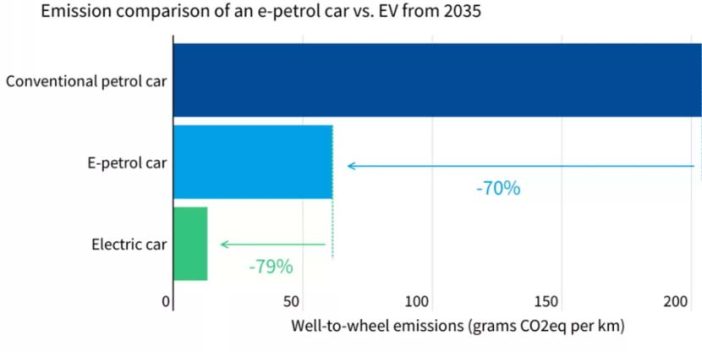
+++ There’s no shortage of Chinese EV brands, but WELTMEISTER MOTORS (WM Motors) has filed for bankruptcy. The beleaguered automaker said they’ve strived to “provide high-quality products and excellent services” since 2015. The company went on to say they have “achieved rapid growth” thanks to the support of their customers, employees and the governments of Shanghai, Wenzhou, Huanggang, Hengyang, Mianyang and Chengdu. However, WM Motors said a number of events have hampered their success. These include the pandemic, a sluggish capital market, fluctuations in raw material prices and “frustrations in obtaining operating and development funds”. These issues have caused the company to run into “operating difficulties” and the eventual “pre-reorganization process”. Despite the setback, WM Motor said they’re hoping to save themselves by “adjusting corporate strategies, solving financial debt problems and obtaining investors to participate in restructuring and development”. The automaker also said they’ll conduct a comprehensive review to identify ways to reduce costs, improve efficiencies, and make the company sustainable. The move comes shortly after Kaixin Auto Holdings signed a non-binding acquisition term sheet with the company last month. At the time, Kaixin said they were “planning to issue a certain number of new shares to acquire 100% of equity of WM Motor held by its current shareholders”. The company billed this as a win as they noted WM Motors has successfully developed and delivered 4 EVs with a fifth model on the horizon. The firm also said the automaker has sold over 100.000 vehicles and is primed for future success. +++
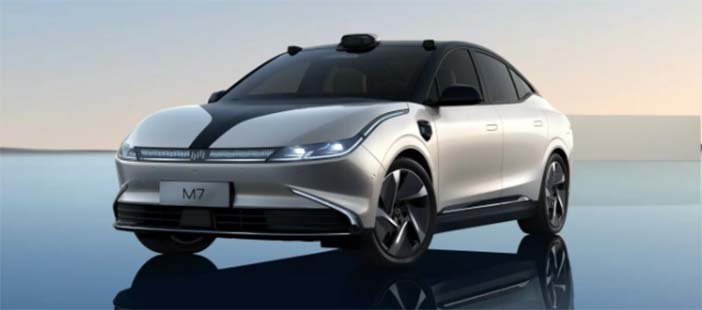
+++ The enticing ZEEKR 001 FR could be sold in Europe where it will serve as the ultimate rival to the Tesla Model S Plaid. However, the Chinese car manufacturer has not committed to a European launch just yet. Zeekr lifted the veil on the ultimate version of the 001 in September. It is driven by a quartet of electric motors that combine to deliver an extraordinary 1.248 hp and 1.280 Nm of torque. Zeekr says it can hit 100 km/h in 2.07 seconds from a “rolling start” but hasn’t specified what it considers a rolling start. Nevertheless, we also know that the top speed has been limited to 280 km/h. During a recent interview, Zeekr Europe’s head of product and connectivity Alessandro Massimino said Zeekr is currently evaluating the cost of homologating the 001 FR for the European market. “We are considering whether to import the 001 FR to Europe to make it our halo model”, he confirmed. Massimino added that Zeekr is also pondering the possibility of adding the ultra-long-range 140 kWh battery pack it offers on Chinese roads in Europe. The most range-focused version of the 001 can travel 1.032 km on a charge according to the Chinese test cycle. Pricing details for the 001 FR have not been announced in China but the carmaker says it will cost more than 1 million yuan, the equivalent of over €143.000 in the Netherlands. If that price remains the same in Europe, it will make the 001 FR pricier than the Model S Plaid, which is available from €110.993 in the Netherlands. If the car is sold in Europe, it will likely only be exported in limited numbers as Zeekr plans to build just 99 examples each month. Providing the 001 FR’s four electric motors with their juice is a CATL Qilin 100 kWh battery pack with an 800 volt architecture. It takes just 15 minutes to charge the battery from 10-80%. +++
